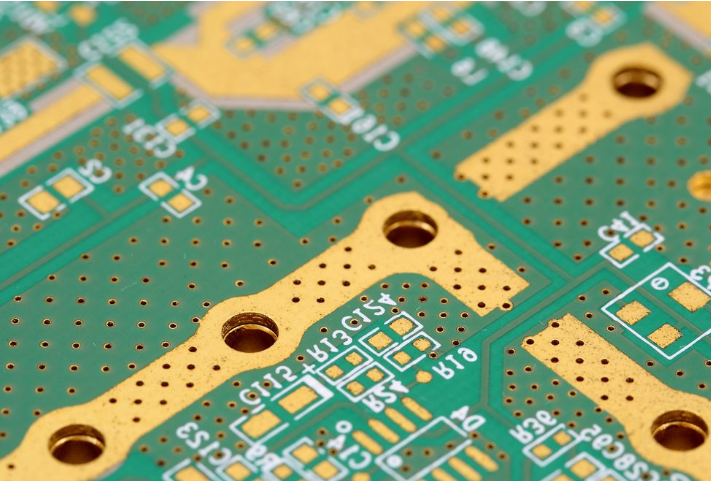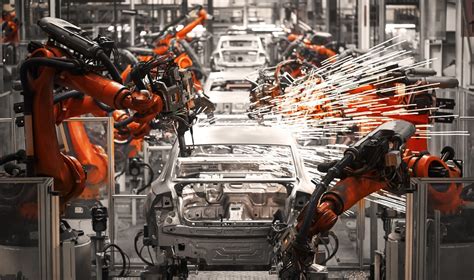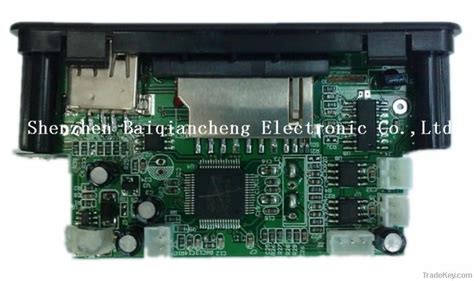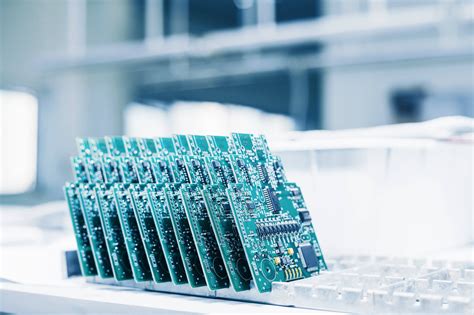Revolutionizing Electronics: The Future of Additive PCB Manufacturing
Key Takeaways
The landscape of pcb manufacturing is undergoing a significant transformation, particularly with the advent of additive PCB manufacturing. This innovative approach accelerates the process of prototyping, allowing you to move from concept to production much more swiftly than traditional methods. This increased speed not only enhances efficiency but also reduces the overall pcb manufacturing cost. Furthermore, as sustainability becomes a priority, additive manufacturing is proving to be a game changer by minimizing material waste, a key issue often faced by pcb manufacturing companies. You can also appreciate how this technology supports the creation of complex designs that were previously difficult or impossible to achieve, thereby expanding what your pcb manufacturing business can offer in terms of product capabilities. As you explore these advancements, you’ll find that additive techniques are paving the way for greater innovation in circuit board development and fostering new solutions that align with the evolving electronics industry demands.
Revolutionizing Prototyping: Speed and Efficiency in Additive PCB Manufacturing
In today’s fast-paced electronics landscape, additive PCB manufacturing is a game-changer, particularly when it comes to prototyping. This innovative approach allows you to rapidly design and produce circuit boards with unprecedented speed and efficiency. Unlike traditional PCB manufacturing, where the process can be time-consuming and costly, additive methods streamline production by enabling the creation of complex geometries directly from digital designs. As a result, you can experiment and iterate on prototypes more freely, reducing your PCB manufacturing cost significantly.
Moreover, with the intensity of competition among PCB manufacturing companies, adopting additive processes not only enhances your ability to innovate but also positions your PCB manufacturing business at the forefront of technology. You have the opportunity to implement faster turnaround times for prototypes, which not only reduces waiting periods but also empowers your team to respond swiftly to market demands. The integration of additive PCB technology encourages continuous improvement cycles in product development, suggesting that the traditional barriers of time and cost in prototyping are no longer as relevant. By embracing these advancements, you can gain a competitive edge and foster a culture of innovation within your organization.
For more detailed insights on this transformative technology, you may find useful resources at Andwin PCB.
Reducing Material Waste: Sustainability in Electronics Production
In the realm of pcb manufacturing, sustainability has emerged as a crucial focus, especially considering the environmental implications of traditional methods. By adopting additive manufacturing techniques, you can significantly reduce material waste during production. Unlike conventional subtractive methods that often result in leftover materials, additive PCB techniques build up layers precisely where needed, minimizing scrap. This approach not only lowers the pcb manufacturing cost by using materials more efficiently but also enhances the overall appeal of your pcb manufacturing business.
For instance, leading pcb manufacturing companies are now integrating bio-based and recyclable materials into their processes. These innovations allow for greater sustainability while meeting the demands for high-performance products. As a result, you can contribute positively to environmental conservation while simultaneously increasing profitability, making it a win-win scenario.
| Aspect | Traditional PCB Manufacturing | Additive PCB Manufacturing |
|---|---|---|
| Material Waste | High | Low |
| Cost Efficiency | Moderate | High |
| Environmental Impact | Significant | Reduced |
| Complexity in Design | Limited | Extensive |
By focusing on these aspects, you can not only enhance your production efficiency but also align your business with growing sustainability goals within the electronics industry. Embracing additive pcb manufacturing methods positions you as an innovator who values eco-friendly practices amidst evolving industry standards.
The Role of Additive Manufacturing in Complex Circuit Board Design
Additive manufacturing is playing a crucial role in the pcb manufacturing landscape, particularly when it comes to creating complex circuit board designs. Traditional pcb manufacturing companies often face limitations in their ability to produce intricate geometries and layered structures efficiently. However, with the advent of additive technologies, you can now achieve designs that were once considered impossible or prohibitively expensive. One of the most significant advantages of this technology is its capability to facilitate rapid prototyping. By streamlining the design process, you can significantly reduce pcb manufacturing costs, allowing for faster iterations and modifications that cater to the specific needs of your project.
Moreover, additive methods allow for a more efficient use of materials. Unlike subtractive methods where material is removed from a solid block, additive approaches build components layer by layer. This not only reduces waste but also enables you to incorporate diverse materials into your circuit boards, enhancing their performance characteristics and opening up new design possibilities. As you explore additive technologies, think about how they can integrate with your existing pcb manufacturing business models, helping you stay ahead in a competitive market while delivering superior products that meet modern consumer demands.
Fostering Innovation: How Additive PCB Technology is Shaping the Future
The introduction of additive PCB manufacturing is significantly reshaping the landscape of electronics, encouraging a new wave of creativity among engineers and designers. This innovative approach allows you to craft intricate, high-performance circuit boards with unprecedented speed and precision, thus transforming your prototyping processes. You can explore a myriad of design possibilities without the hurdle of traditional pcb manufacturing constraints. In contrast to classic methods where each prototype iteration necessitates a lengthy production cycle, additive techniques enable you to rapidly iterate designs, pushing the boundaries of your pcb manufacturing business forward.
Additionally, the ability to create complex geometries is not merely a technical advancement; it’s a catalyst for innovation within your organization. By utilizing additive technologies, you can combine multiple functionalities into a single board, reducing the need for multiple components while enhancing overall performance. This reflects a broader trend within the industry where pcb manufacturing companies are increasingly prioritizing design efficiency alongside functionality.
Moreover, with considerations towards cost-effectiveness in mind—by minimizing material waste and maximizing resource utilization—initiatives in sustainable pcb manufacturing practices are taking root. This not only bolsters your bottom line but also aligns with growing environmental consciousness in tech industries.
“Innovative design comes from breaking boundaries. Additive technologies provide that unique capability.”
As you leverage these advancements in your projects, be prepared to tackle challenges around scalability and integration with existing systems. However, the potential gains—both in creativity and sustainability—are paving pathways for futuristic applications that could redefine what’s possible in electronics engineering. Embrace these transformations to remain competitive in an ever-evolving market.
Integrating Traditional Methods with Additive PCB Manufacturing
The integration of traditional methods with additive PCB manufacturing is opening new avenues in the pcb manufacturing business. By combining established techniques with innovative additive approaches, you can enhance the overall efficiency and performance of circuit boards. This synergy not only streamlines production but also effectively addresses challenges faced by pcb manufacturing companies. For example, while traditional methods might struggle with complex geometries, additive techniques excel at layering materials to create intricate designs without the need for extensive tooling. This combination allows you to optimize production timelines and reduce pcb manufacturing costs, making it a financially viable option in a competitive market. Moreover, by embracing both methodologies, you can leverage the strengths of each, ensuring that you meet specific project requirements while pushing the boundaries of innovation in electronic design and functionality. As you explore this integrated approach, you’ll likely find that it fosters greater collaboration between teams and paves the way for unique solutions that could redefine industry standards. Ultimately, this holistic strategy not only enhances your capabilities but also contributes to a more sustainable future in pcb manufacturing by minimizing waste and improving resource utilization.
Exploring New Materials for Enhanced Performance in PCBs
As you navigate the landscape of additive PCB manufacturing, you’ll find that new materials play a pivotal role in enhancing the performance of circuit boards. The integration of advanced materials into the PCB manufacturing process allows for greater flexibility and functionality, catering to the diverse and demanding needs of modern electronics. For instance, the use of materials that exhibit improved thermal management properties can lead to longer-lasting and more reliable boards, which is crucial for high-performance applications. Additionally, PCB manufacturing companies are innovating with conductive inks and flexible substrates that open up new possibilities for design. This shift not only reduces PCB manufacturing costs but also fosters creativity in circuit layout, enabling designers to implement intricate geometries and multi-layer configurations with ease. By harnessing these cutting-edge materials, you can elevate your PCB manufacturing business into a new realm of efficiency and sustainability, ultimately driving success in a competitive market. As this technology evolves, it’s essential to stay informed about current advancements to leverage their full potential in your projects.
Case Studies: Success Stories of Additive PCB Applications
The applications of additive PCB manufacturing have garnered remarkable success across various industries, illustrating its transformative impact. For instance, companies engaged in the pcb manufacturing sector have utilized this innovative technology to create intricate, high-performance circuit boards in record time. One notable case is a leading automotive electronics firm that adopted additive processes to produce customized prototypes for advanced driver-assistance systems. This shift not only expedited the pcb manufacturing cost by reducing material waste but also enhanced the functionality of the components. Another example is a startup specializing in wearable technology. By employing additive techniques, they minimized their operational expenses while improving their product design flexibility, leading to quicker market entry. These success stories reflect how pcb manufacturing companies are embracing modern techniques that allow for rapid iterations and creative design solutions, thus fostering a culture of innovation in the ever-evolving electronics landscape. As you explore these case studies, it becomes evident that additive PCB manufacturing is not merely an alternative; it’s becoming essential for any pcb manufacturing business seeking to thrive in a competitive environment.
Overcoming Challenges in the Adoption of Additive PCB Technologies
As exciting as additive PCB manufacturing is, the transition to this innovative technology is not without its hurdles. One significant challenge faced by PCB manufacturing companies is the need for investments in new equipment and training. Traditional methods dominate the landscape, making it tough for businesses to shift from established practices. Moreover, varying PCB manufacturing costs can deter smaller firms from fully embracing additive technologies. Another aspect involves ensuring compatibility with existing processes; you need to understand how to integrate additive methods with conventional techniques to optimize production. This can lead to complex workflows that may initially slow down productivity. Additionally, material selection presents its own set of challenges; while additive techniques allow for new materials that enhance performance, they also require extensive testing and validation to ensure reliability in final products. In summary, addressing these challenges is crucial for your journey toward leveraging the full potential of additive PCB manufacturing, ultimately positioning your PCB manufacturing business advantageously in an evolving market landscape.
Conclusion
In summary, additive PCB manufacturing is set to reshape the electronics landscape by introducing unprecedented levels of efficiency and creativity. As you navigate through the world of PCB manufacturing companies, you’ll notice how this technology not only accelerates the prototyping process but also significantly reduces PCB manufacturing costs. By allowing for the creation of complex designs with minimal material wastage, it addresses both performance needs and sustainability challenges. The insights gathered from case studies illustrate how various PCB manufacturing businesses have successfully integrated these techniques, showcasing enhanced product capabilities and fostering a spirit of innovation in their processes. Embracing this technology can empower you to push the boundaries of what’s possible in electronics design and production. The path forward promises exciting developments that will redefine standards in PCB manufacturing, making it an essential area to explore.
FAQs
What is additive PCB manufacturing?
Additive PCB manufacturing is a revolutionary technique that involves building printed circuit boards (PCBs) layer by layer, using various materials. This method allows for the creation of highly intricate and customized designs that traditional methods may struggle to achieve.
How does additive PCB manufacturing differ from traditional methods?
The primary difference lies in the construction process. Traditional pcb manufacturing typically involves subtractive processes, where material is removed to create circuits. In contrast, additive techniques focus on adding material, which can lead to complex designs without generating excess waste.
What advantages does additive PCB manufacturing offer?
Among its many benefits, additive PCB manufacturing significantly reduces the pcb manufacturing cost, accelerates prototyping, and minimizes material waste. This efficiency not only lowers expenses but also contributes to a more sustainable electronics production process.
Are there specific industries that benefit most from additive PCB technology?
Various sectors benefit, including telecommunications, consumer electronics, and healthcare. Innovators in these fields use additive technologies to push boundaries in design while keeping costs manageable, offering significant advantages over conventional pcb manufacturing companies.
What are the challenges associated with adopting additive PCB technologies?
Despite its advantages, some challenges include the need for skilled personnel and initial investments in advanced equipment. However, as more companies embrace these innovations, the learning curve will likely decrease alongside improvements in technology and process standardization.






